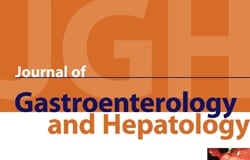
“Although the mortality rates of cirrhosis are underestimated, its socioeconomic burden has demonstrated a significant global impact. Cirrhosis is defined by the disruption of normal liver architecture after years of chronic insult by different etiologies. Treatment modalities are recommended primarily in decompensated cirrhosis and specifically tailored to the different manifestations of hepatic decompensation. Antifibrogenic therapies are within an active area of investigation.
The endocannabinoid system has been shown to play a role in liver disease, and cirrhosis specifically, with intriguing possible therapeutic benefits. The endocannabinoid system comprises cannabinoid receptors 1 (CB1) and cannabinoid receptor 2 (CB2) and their ligands, endocannabinoids and exocannabinoids.
CB1 activation enhances fibrogenesis, whereas CB2 activation counteracts progression to fibrosis. Conversely, deletion of CB1 is associated with an improvement of hepatic fibrosis and steatosis, and deletion of CB2 results in increased collagen deposition, steatosis, and enhanced inflammation.
CB1 antagonism has also demonstrated vascular effects in patients with cirrhosis, causing an increase in arterial pressure and vascular resistance as well as a decrease in mesenteric blood flow and portal pressure, thereby preventing ascites. In mice with hepatic encephalopathy, CB1 blockade and activation of CB2 demonstrated improved neurologic score and cognitive function.
Endocannabinoids, themselves also have mechanistic roles in cirrhosis. Arachidonoyl ethanolamide (AEA) exhibits antifibrogenic properties by inhibition of HSC proliferation and induction of necrotic death. AEA induces mesenteric vasodilation and hypotension via CB1 induction. 2-arachidonoyl glycerol (2-AG) is a fibrogenic mediator independent of CB receptors, but in higher doses induces apoptosis of HSCs, which may actually show antifibrotic properties. 2-AG has also demonstrated growth-inhibitory and cytotoxic effects.
The exocannabinoid, THC, suppresses proliferation of hepatic myofibroblasts and stellate cells and induces apoptosis, which may reveal antifibrotic and hepatoprotective mechanisms. Thus, several components of the endocannabinoid system have therapeutic potential in cirrhosis.”
https://www.ncbi.nlm.nih.gov/pubmed/29890719
http://www.mdpi.com/2305-6320/5/2/52









